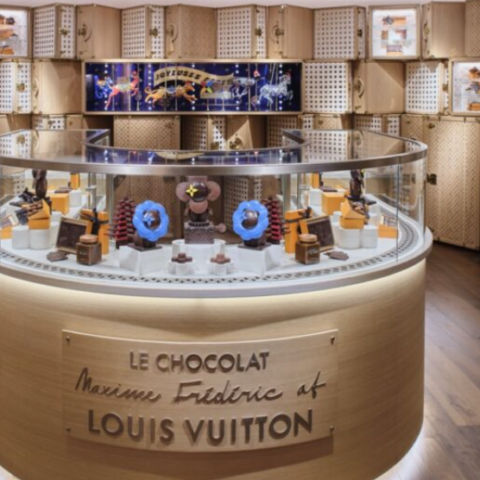Decorations with Meaning
By Millie Winter
They lay effortlessly on the delicate arms of the fir tree, finally being taken out after a year, having been carefully wrapped up in storage tissue. The tallest of the family places the first one on top of the crown of the tree. Maybe the tree wears the same colour, or maybe the tree is dressed in baubles of all the colours of the rainbow. Even so, as the night approaches, the switch is turned on and the tree illuminates with Christmas lights and glistens in its facade of magical bulbs. These decorations, so much a part and parcel of the holiday season for families across many a continent. Ornaments have been around for many years and have become an integral part of any annual Christmas tree decorating ceremony. But with all their beauty comes an even more miraculous history. The art of ornamentation. This art form is as old as the trees we decorate and is an interesting one that is explored in the recent publication by Thomas Weil, in New Grammar of Ornament. Read Decorations with Meaning, to find out more about the history of the classic Christmas decoration belonging to the process of ornamentation.
Ornamentation is described as the decorative elements added to something to enhance its appearance, like the experience of decorating your house to be in the Christmas spirit. Scavenging the aisles to find the perfect Star to be placed at the top of your tree falls into the process of ornamentation.
Yet ornamentation is to be seen in so many places when we bother to look, on buildings, fabrics, jewellery, tiles, ceramics, and wallpaper, among other things. Ornament, formerly scorned at the dawn of the modern era, has made a comeback in architecture and now influences design draughts.
As we approached the modern age, industrial publication and production rapidly increased the use of ornamentation, and soon, it was seen as the “enemy to all good design”. Why???

Interestingly, the earliest ornamented artifacts were found in Southern Africa. There are four proto ornament types that have stayed with us and constructed the process. Weil looks into the significance of these original forms. From that time to the present, the four proto-ornaments, striped, rectangular, and triangular lines, and freely placed dots, have served as the typological and construction basis for ornament.

“From the recurring arrangements of stripes, rectangles, triangles and dots and the frequency of the forms of floral ornaments used, he derives a new “grammar of ornament.”
Weil has separated his new novel into three sections: Minimal, Geometric, and Floral, each representing what he believes to be the three main kinds of ornamentation.

Minimal: generally viewed as an art achievement of the 1960s. From a purely formal perspective, it appeared as early as the 1920s. At that time it was not associated with ornament, which had recently lost its acceptance. Puristic striped, rectangular and triangular shapes emerged within the context of constructivist, Suprematist and concrete art.
Geometric: Over the course of millennia, more complex geometric shapes and principles have developed from the geometrically minimalistic basis. They have achieved a new level of quality formally, yet not in principle. Today the trained eye can identify the simple geometric MINIMAL shapes everywhere in modern everyday life, whereas more complex geo-metric ornaments appear far less often in design, architecture and art.
Floral: appropriate categories need to be developed and distinctive related groups and shapes identified. In doing this, several focuses emerge from the diversity of floral shapes: flowers, now called SUNS, from the front and the side, PLANTS with leaves and vines, ARCHETYPES and the quaternity of the planet EARTH: water, air, earth and fire. Ornaments that connect flora with animals and human beings were not included in the canon.

“In New Grammar of Ornament, I would like to offer a stimulus to reconsider ornamentation systematically based on its previous history. In doing that, I will be looking not only at the early history but also at the ornament cultures that have evolved worldwide,” Thomas Weil.
Similar to the prints of ornamentation, The Walala and Sunspel collection is artists Camille Walala’s take on the traditional jumper. These jumpers portray prints and designs that look very similar to that of the designs Weil pays tribute to in his novel.
London based artist, Camille Walala, has collaborated with Sunspel to create a reinvented Christmas jumper using the playful and bold colours found in her artwork. Her work includes full-façade murals, immersive 3D installations, street art, interiors and set design, all characterised by a fusion of bold colours and playful geometric patterns.

Also connecting to the holiday spirit of the month of December, the history of this subject has a lot of correlation to religion. Patterns are often used throughout several regions. Archetypical images are reflected in ornaments, and their interpretations point to ritual religious locations and dream study. Patterns have played a big part in a handful of religious backgrounds. Often because the representation of human form is not allowed in certain practices so pattern fills in.
So, as you hang your ornaments this season, remember the immense history that goes into such wondrous sparkling decorations. Weil’s book allows us to look into the love with the feel and the joy that comes with decorating our homes for the holidays.
If you enjoyed reading Decorations with Meaning, why not check out From Short Stories to Films here.
Images from Thomas Weil.






